by John Payne
Humans are susceptible to the shifting baseline syndrome. We imagine that what we see from our childhood up to today is what is normal … what has been so for a long time, and what will be so for the foreseeable future. This view can be more dangerous to wildlife than poaching and habitat loss. It is a view that can lead to preventable extinctions, through faulty analysis and wrong actions to remedy the problem. What we see now is a small and essentially random snapshot of the panoply of history from, say, 20 million years ago to 100 years from now. For poor old Dicerorhinus (the Sumatran rhinoceros), a fifty year period of no decisions and wrong decisions is the problem.
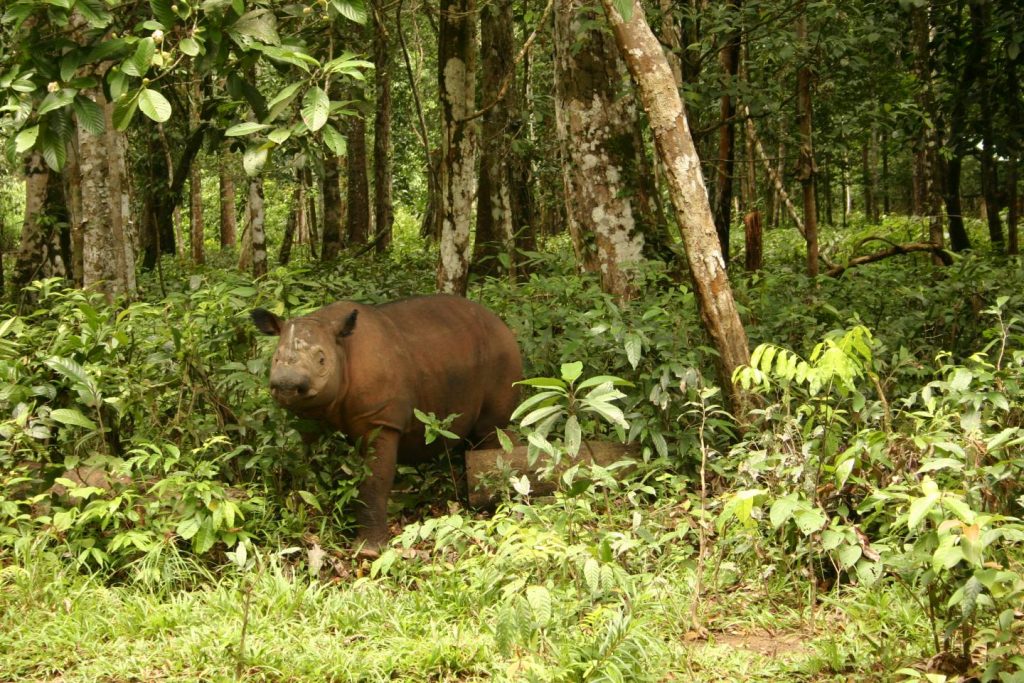
In reality, Dicerorhinus is the Asian rhinoceros. Only 5,000 years ago, the species was present throughout Southeast Asia including what is now central China. Rhinos are not equatorial rainforest specialists. In fact, equatorial rainforest is probably a poor habitat for Dicerorhinus: poor quality and sparse food, leached soils depleted in minerals, and too hot and humid for a bulky, large mammal to be comfortable. It has ended up in these marginal habitats at the very southern end of its range, in Sumatra and Borneo, from about 1,000 years ago, through various historical sequences of events, not least the 100 meter rise in sea level between 18,000 to 7,000 years ago, and the 2,000 year old madness of the Chinese belief that rhino horn has medicinal properties.
A glance through the sparse literature on Sumatran rhino from the 1930s to 1970s clearly shows that the species was by that time in deep trouble: very few individuals, widely scattered in separate forest blocks in four or five nations, generally with fewer than ten or so individuals in any one place. A prior millennium or more of hunting to supply horns for Traditional Chinese Medicine (TCM) was the main reason for this accelerating decline. Clearly, the problem to be addressed by the 1980s was not of excessive mortality, which had already happened, but of the Allee effect: very low Sumatran rhino population density everywhere, very few rhinos, and not enough breeding to reverse the trajectory towards extinction. The answer should have been obvious: launch a single programme of captive breeding in managed, fenced facilities to increase population density of fertile adults, boost birth rate and address the inevitable inbreeding depression developing in each isolated cluster. Similar concepts had worked for the white rhino in South Africa, for both species of bison and for the musk-ox, many decades earlier. But what should have been obvious was not to be. Only a few people wrote about the situation clearly, notably Tom Foose, Conservation Coordinator of the American Association of Zoological Parks and Aquariums from 1981 to 1990.
The fate of Dicerorhinus was sealed on 4 October 1984, when a compromise was reached among 20 of the world’s then designated Sumatran rhino experts and government representatives from Indonesia, Peninsular Malaysia and Sabah. At an IUCN-brokered meeting in Singapore on Sumatran rhino, the executive director of the Species Survival Commission and meeting facilitator valiantly and diplomatically did his best to reach a strong conclusion. Unfortunately, among the 20 persons present, there was a body of opinion, led vociferously by two elderly European professors, that all Sumatran rhinos should stay put in the wild. The compromise reached was that where rhinos were in protected areas, or anywhere showing signs of breeding, they should be left alone, and only “doomed” rhinos would be captured for ex situ breeding purposes.
The fatal flaw in this compromise became apparent in 2000, when Nan Schaffer of SOS Rhino pointed out that at least 70% of the 23 females captured between 1984 and 1994 (11 in Sumatra, 10 in Malaya and 2 in Borneo) suffered from reproductive tract pathologies at or soon after time of capture, a feature that prevented or hindered pregnancy. The subsequent scattering of captured rhinos between facilities in five barely-collaborating regions added to the inevitable failure of this programme. It is essential to understand that this first captive breeding programme failed because of a fatal constraint in the criteria for capture (namely selection of old, infertile and sub-fertile breeding stock), coupled with multiple weaknesses in execution, and not because the original concept was wrong.
Fast forward to 2019 and we see “new” ideas and new people. In fact, the “new” ideas are a replay of the early 1980s. Many of the people involved in Sumatran rhinos now, including high profile people in positions of directing policy, seem doomed to repeat the mistakes of 35 years ago.
I quote here from the minutes of the 4 October 1984 meeting, the words of the late Tom Foose : “Zoos in North America and Europe have experience and expertise in the management and breeding of three Rhinoceros species, Indian, White, and Black Rhino. They have active research programs on exotic species in reproductive technology including artificial insemination, embryo transfer, and cryopreservation. Transfer of this technology is possible but will take time”.
Wise words, ignored by the 1984 decision-makers. Then, there were several hundreds of Sumatran rhinos alive in the world, many obviously fertile breeding animals, some in sites easy to carry out captures. Now, there are fewer than 50 Sumatran rhinos, with perhaps about five or so breeding females left alive. And a new generation of advisers who seem frozen to a standstill.
Sumatran rhino has been ill-served, right up to today, by people in key positions, who not only lack knowledge and understanding, but have jostled to suppress those who do, and prevented a single targeted leadership role to allow for a genus recovery programme.
So, do we give up?
No. Our lessons (ignored so many times) are the white rhino (paradoxically, close to extinction in 1890 but much safer now, despite noise to the contrary), the European bison (down to 27 individuals in 1927, bred from 12 animals) and the team led by Thomas Hildebrandt and Cesare Galli (the people kept out of Indonesia by the International Rhino Foundation), who in June 2019, transferred a test tube white rhino embryo into a female whose eggs were fertilized in vitro.
The array of “protected areas” that the Earth will end up with a few decades from now, due to a surfeit of Homo sapiens, are TOO FEW, TOO SMALL, TOO SCATTERED, AND OF MARGINAL SUITABILITY for almost all endangered species. Whether we like it or not, some endangered species will be saved from extinction only if private land owners play a role, in allocating space and resources to help sustain breeding of those species, so that the fate of the Sumatran rhino is not played out again and again. Who are the private land owners? They can be anyone. But three stand out in the context of Malaysia and Indonesia : oil palm plantations, industrial wood plantations and zoos.
We also need always to remember : wildlife will survive only if we can imagine how populations can be sustained and, if necessary, actively managed in the long term. Wild animal welfare programmes are noble and needed, but are usually marginal and rarely relevant to a species population conservation programme.
The overall lesson that needs to be learned from the fiasco of the Sumatran rhino is : the need for thinking by experienced practitioners, to convince governments to put in place rational, long-term, big picture species-specific programmes designed save other endangered species.
Beginning the paradigm shift
The first thing to do is to acknowledge and embrace the idea that, while traditional “protected areas” (such as national parks and wildlife sanctuaries) are essential to conserving wild species, they will never be sufficient to save all species from extinction. In much of the “western” world, due primarily to a long history of forest loss and allocation of land to private interests, privately-owned lands play a key role in nature conservation. But this scenario tends not to apply in the equatorial regions, where tropical rainforests are most prominent. Both Malaysia and Indonesia have a tradition (from the colonial era) of separating (on the one hand) forests, biodiversity, protected areas and government as one conceptual clump, and (on the other hand) business, corporations, land titles, leases, plantations, and private enterprise as a different clump. There is also, of course, a third clump, of indigenous people and rural communities, but we will leave these out of the discussion here.
To save as much biodiversity as possible, the second clump has to play a role. While many, probably most, rainforest species of plants, animals, fungi and micro-organisms need forest as their habitat, there are some that do not. Those that do not include rare large animal species. These are the ones with which to start. The most significant way in which land-owners and lease-holders other than governments, therefore, can play a role is to allocate portions of their land to conservation. If thought out carefully and practically, even small portions of titled or leased land can have disproportionately huge positive impacts of saving rare species. The days of automatically moving all wild animals out of plantations, of getting governments and NGOs to do the work at other peoples’ expense, and giving donations to NGOs to perform “projects” that have no long-term purpose, are numbered. And the number of those days should not be large.
One of the pioneers in this new paradigm is PONGO Alliance (www.pongoalliance.org), a partnership of visionary oil palm growers and conservation practitioners, which aims to assist oil palm growers to achieve their mandated sustainability goals by “making resilient landscapes for wildlife and people a reality”.

The initial ground engagement of this new initiative is in the lower Kinabatangan region of eastern Sabah, Malaysia. Here, PONGO Alliance aims to restore a much-depleted wild orangutan population (formerly around 8,000, now around 800 individuals). The region has about 42,000 ha of protected but highly fragmented forests. Much of the rest of the area was converted to oil palm monoculture 20-40 years ago and many estates are now undergoing second planting. The current orangutan population is at a critically tipping point such that without oil palm industry cooperation, viability of this critically endangered and fully protected species in the wild is not assured in the long term.
Female orangutans live in communities of related females and are intolerant of unrelated females, so simply relocating a female from her current location elsewhere is not a definite solution. Because females have been preferentially lost during land conversion, any remaining female still residing on her ancestral land is of critical genetic value to the species. Males require access across agricultural landscapes between now fragmented protected forests and any remaining natural forests on private lands.
To best serve both an industry and a species that is too often misrepresented by incendiary and polarising special interest groups, PONGO Alliance engages industry with a holistic, and non-judgemental approach on an individual basis, company by company and even estate by estate.
By working together, PONGO Alliance aims to arrive at creative and collaborative solutions to create a paradigm shift in agricultural practice that reframes the oil palm industry as one that supports rather than destroys orangutan habitat.
With ongoing implementation of Malaysian Sustainable Palm Oil (MSPO) and Roundtable of Sustainable Palm Oil (RSPO) standards in Sabah, the time is right to help support orangutans to survive and breed in the mixed oil palm and forest landscape. Land along rivers, on steep slopes and non-productive swamps can be used to increase orangutan habitat within plantations. This is done by planting the most important orangutan food plants, either under old oil palms that are not intended for replanting, or on cleared land. There are many plants favoured by orangutans as food, but two sorts stand out as of great significance: Figs and lianas. Lianas, particularly those of the legume family, supply a big proportion of the protein requirements of wild orangutans, which feed on their shoots, leaves, bark and fruits.
The magic of ficus
The most fundamental biological requirement of all animals is food and water. In the context of Malaysia and Indonesia, we could imagine under a different array of historical and current human attitudes that Sumatran rhinos could live in oil palm plantations, feeding on woody weeds, with wild cattle feeding on the grasses, together avoiding the need for herbicides. That is unlikely to happen now, but we can imagine other scenarios where plantations can play a role in conserving other rare wildlife species.
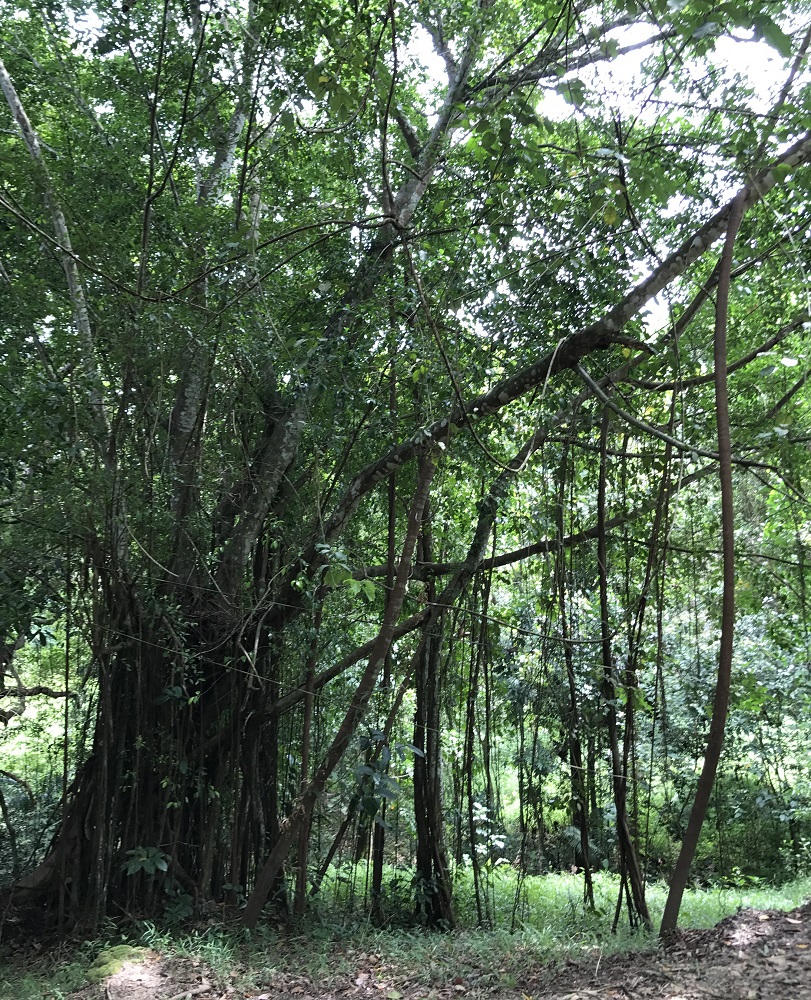
One of the most interesting plant genera in Borneo is Ficus. Commonly known as fig in English, ara in Malay and Indonesian, and nunuk in Sabah, there are over 150 species in Borneo, including tall trees, small trees, stranglers (hemiepiphytes if you are a botanist), epiphytes and climbers. A fig “fruit” is actually an arrangement of many small flowers within a receptacle, known as a syconium, but for convenience we call them fruit. Ficus is “keystone”, meaning a genus that has a disproportionately large effect on the functioning of its natural environment relative to its abundance. The main importance of Ficus lies in the fact that in any one area, there are almost always a few or many Ficus plants bearing fruits, and the fruits are eaten by many mammal and bird species. The young leaves are also eaten by some wildlife, including orangutans.
Borneo Rhino Alliance started planting Ficus in 2012, as a means to supply leaves to the rhinos, which favour Ficus leaves as food over many other kinds of plants. At that time, it was imagined that there would be several rhinos living in the Borneo Rhino Sanctuary facilities in Tabin Wildlife Reserve. Sadly, that was not to be. There were probably only four or five rhinos still alive in Sabah at that time, and three were already in captivity at Tabin. Now, BORA has living, planted Ficus of over 30 species on land occupied by the rhino food garden and old rhino facilities.
A significant feature of Ficus is that planting materials can be propagated vegetatively, without the need to wait for, harvest and plant seeds. Vegetative propagation is simpler and quicker than production of seedlings from seeds. Two vegetative propagation methods can be used : marcots (also known as air layering) and cuttings with application of rooting hormone. If marcots or cuttings are taken from mature fig plants and planted out as if they are seedlings, fruiting will occur much sooner in the planted-out marcot or cutting.
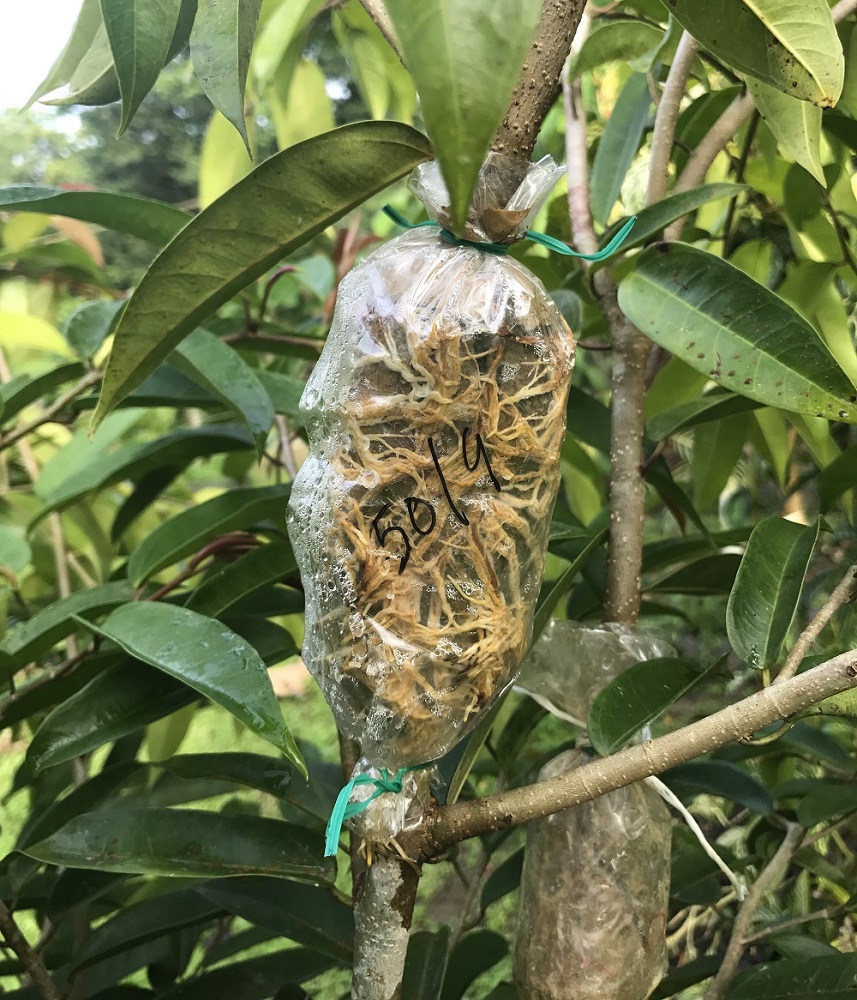
Trials are ongoing to seek optimum details of propagation methods, as well as requirements of the various species, and matching of species to sites.
What BORA offers
BORA can supply marcots or cuttings of many of the species now being grown in Tabin, each ready for planting, in a soil-compost matrix in black plastic bags. Orders should be placed in advance. Prices range from RM20 to RM50 per plant, depending on species (some are more difficult to propagate than others) and size. Sales come with advice, if needed, on optimum planting and maintenance methods.
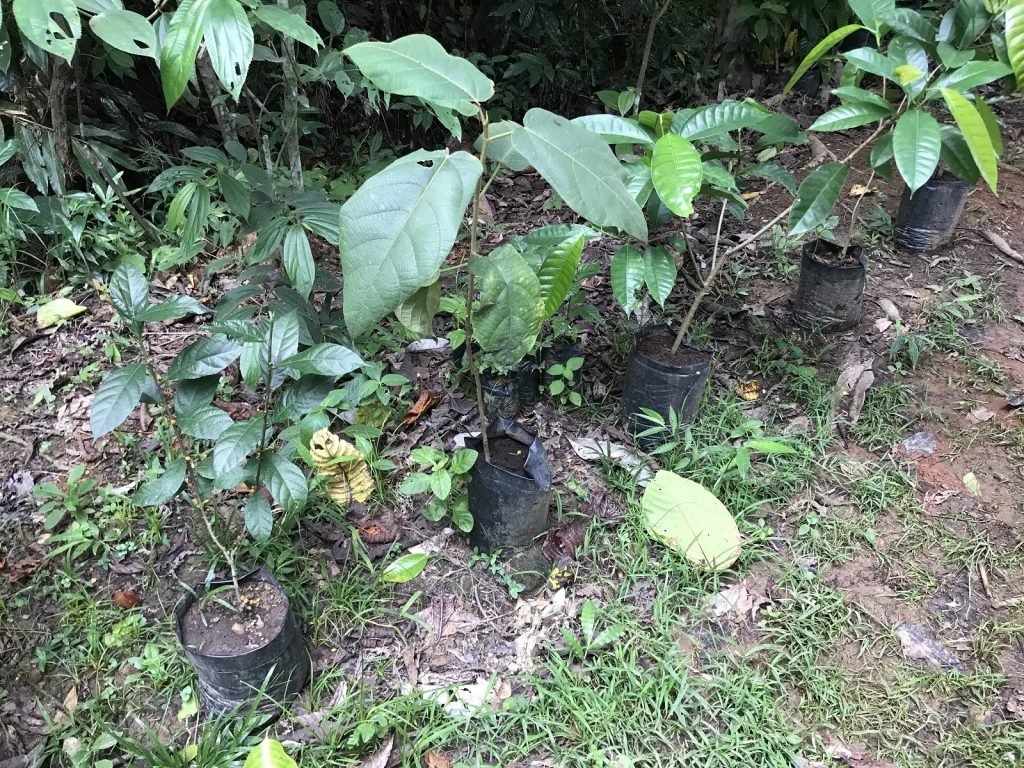
BORA also offers short, customised courses on how to produce marcots.
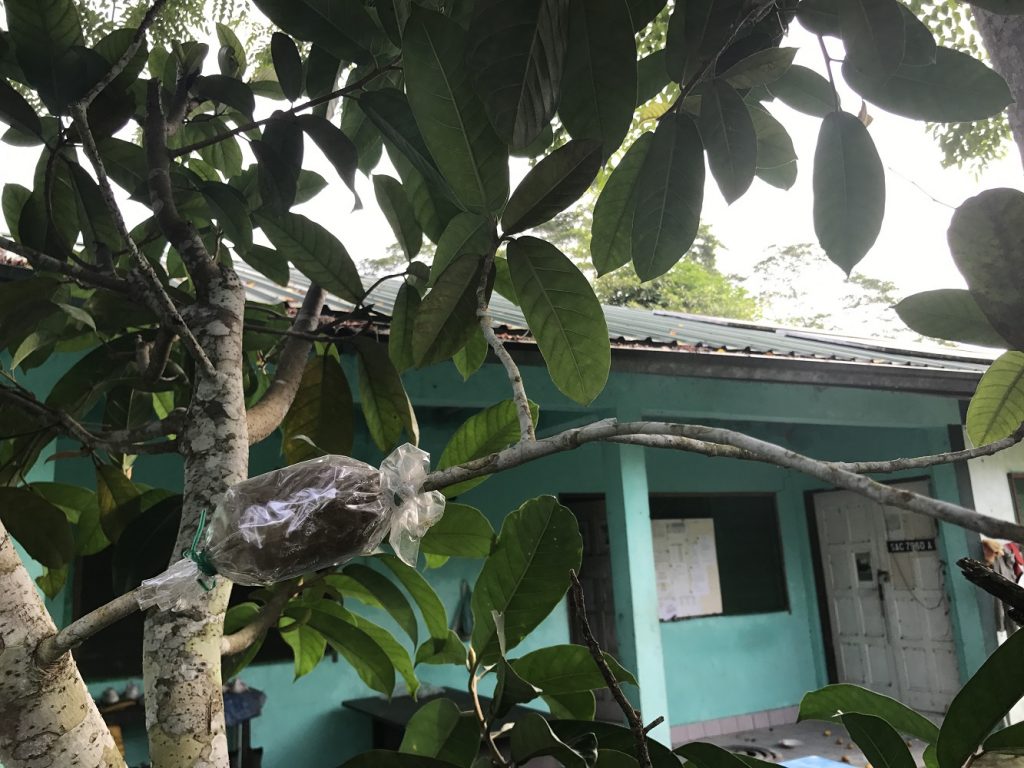
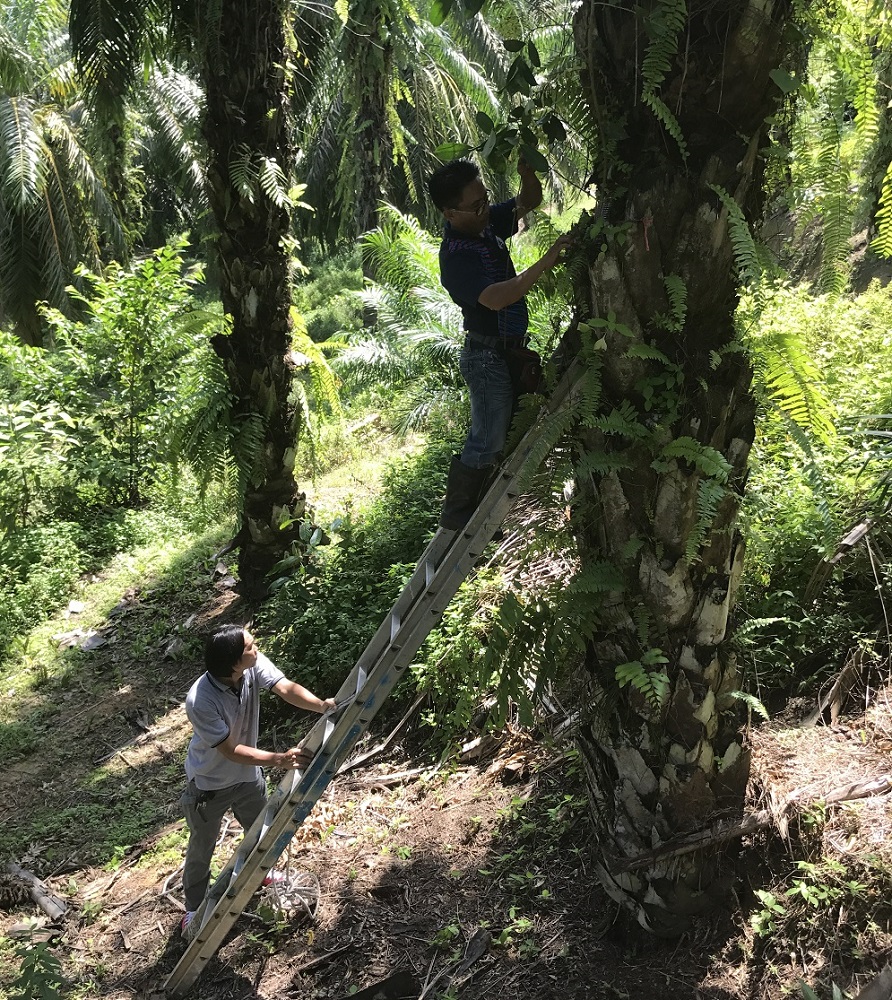
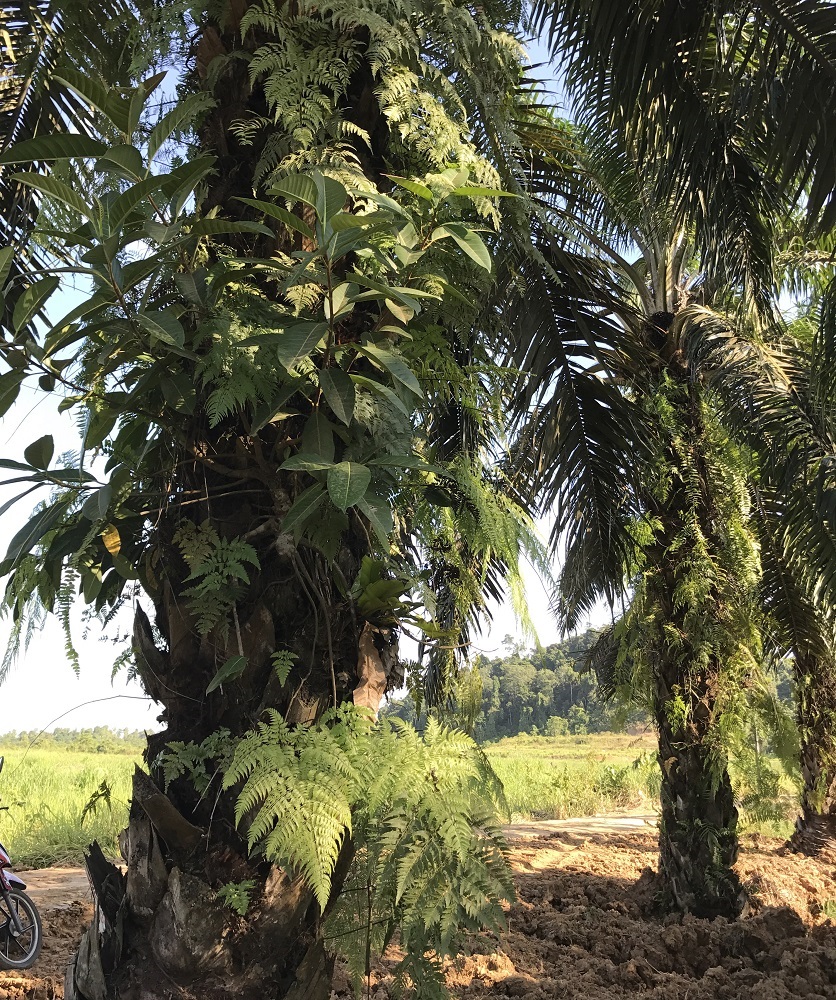
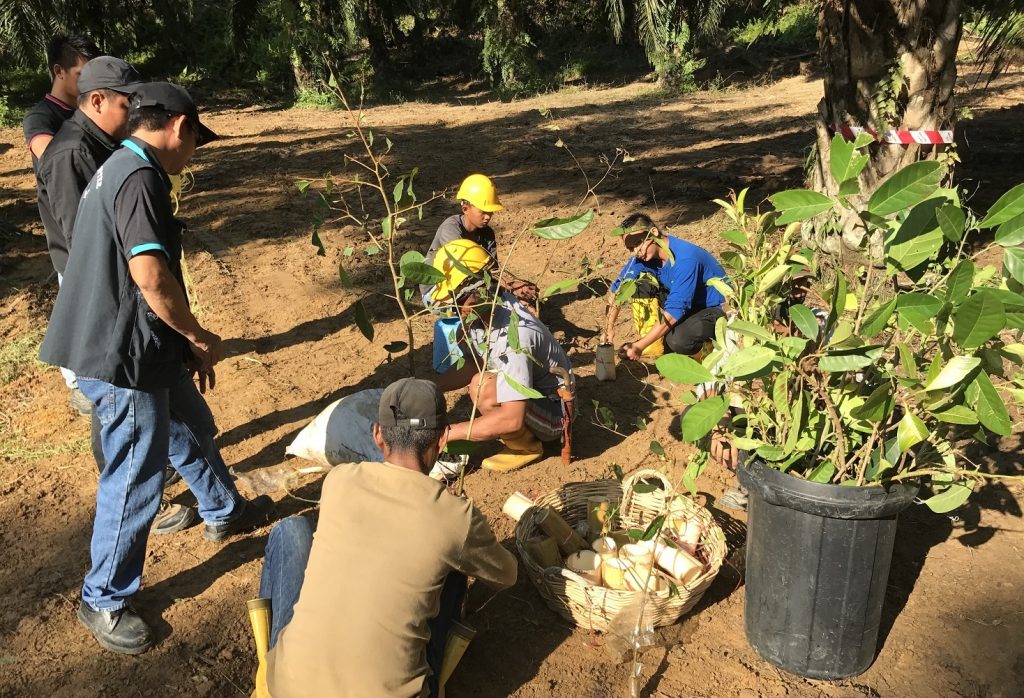
ACKNOWLEDGEMENTS AND CONTACTS
BORA thanks Quentin Phillipps for his outstanding contribution to Ficus identification in the field (https://borneoficus.info/) and for supporting us via the Borneo Fig Project; and PONGO Alliance for providing the impetus to pursue development of the nursery at Tabin Wildlife Reserve, with an emphasis on Ficus and vegetative propagation.
Contact : John Payne (sabahpayne@gmail.com) or Dr Zainal Zahari Zainuddin (zainalz.bora@gmail.com)